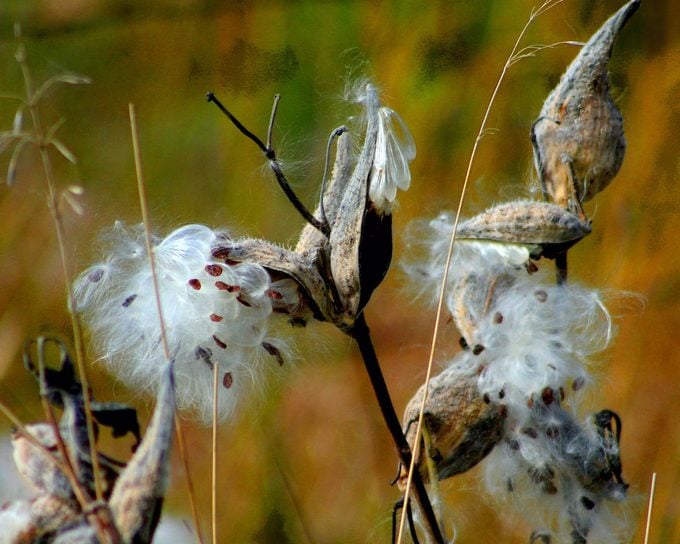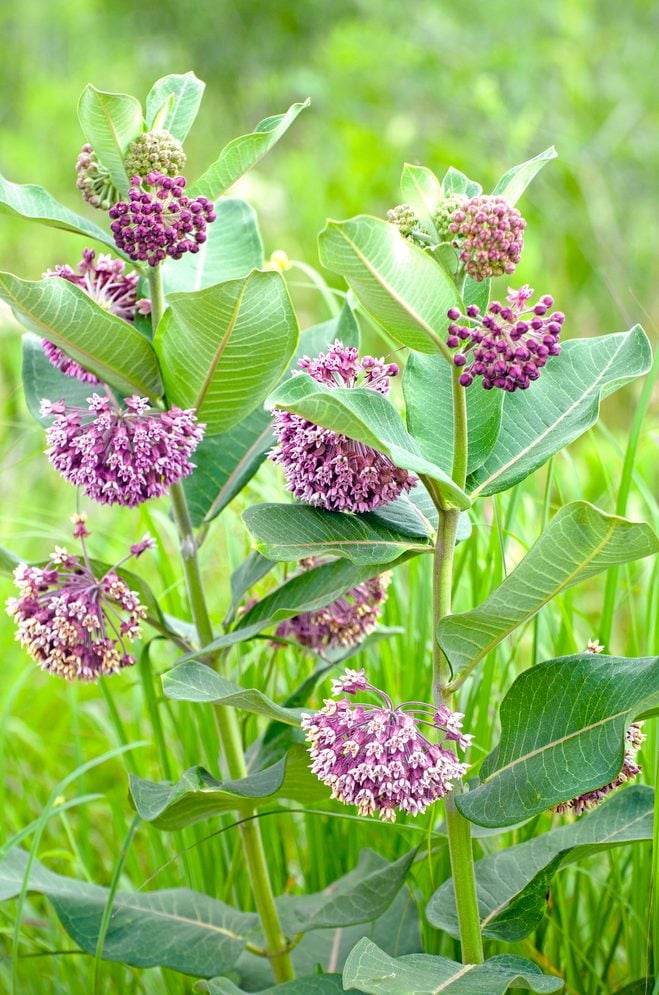How to Save and Plant Milkweed Seeds From Pods
Updated: Apr. 09, 2024
Milkweed seeds are tricky to grow. Learn how to save seeds from milkweed pods and when to plant milkweed seeds outside or start them indoors.
On This Page
Collect Milkweed Seeds From Pods

“I collected some dried pods from common milkweed last year. What’s the best way and time to plant the seeds from the milkweed pods?” asks Birds & Blooms reader Judy Roberts.
Horticulture expert Melinda Myers says, It’s hard to believe a plant that readily starts from seed in nature can be challenging for us to do the same. Before planting milkweed, keep in mind that common milkweed quickly forms colonies and can overrun a garden. Others, such as butterfly weed and swamp milkweed, are less aggressive and still support monarch butterflies.”
The seeds must be mature to sprout, so collect seeds just before or as the pods split open after the flowers stop blooming. Melinda says, “Start by removing any seeds remaining in the pods, saving only rich brown seeds that are mature and viable. It’s best to separate seeds from the white fluff, called coma, before drying and storing. You can do this by holding the seeds while in the pod and pulling off the fluff, rubbing the seeds between the palms of your hands or placing them in a paper bag and shaking vigorously.”
You could also consider tying small bags over the milkweed pods while they mature, since many distribute their seeds far and wide (especially common milkweed).
“After the pods on my milkweed plants open, I take the seeds and shake them into envelopes that I’ve labeled with the year the seeds were collected,” says reader Patrick Hogan.
Is tropical milkweed bad for monarchs? Is honeyvine milkweed invasive? Here’s what you need to know.
Milkweed Seed Cold Stratification
You will need to store seeds in the refrigerator or an airtight container in a cold place for several months. This cold treatment is needed to end dormancy and increase sprouting success.
Melinda recommends, “Next, store the dry seeds in an airtight container in the refrigerator until you are ready to process them for planting. Provide seeds with cold, moist stratification to break dormancy right before planting. Place the seeds in a damp paper towel inside a plastic bag, or with sand or vermiculite in a container. Put in the refrigerator for at least 30 days.”
Check out even more of the best types of milkweed to support monarch butterflies.
When to Plant Milkweed Seeds

Melinda says, “Once stratified, you can start the seeds indoors or plant them directly in the garden after the last spring frost. Or let nature do the work with winter sowing. Look up instructions online for converting a plastic milk jug into a vessel for starting these and other seeds outdoors. In the future, consider mimicking nature and planting the seeds directly in the garden during fall.”
If it’s possible, start your seeds indoors under artificial lights in a quality potting or seed-starting mix. The seedlings will be ready to transplant in the garden once they are 3 to 6 inches tall and when the threat of the last spring frost has passed. Plan for about four to eight weeks of indoor growing time.
You can also plant seeds directly outdoors. Fall is the best time to direct-sow the seeds for gardeners in cold climates. Many milkweed varieties contain hard coatings that have to break down before the seeds will germinate. Exposure to a winter’s worth of snow and cold, wet weather will do just that.
Check out the Monarch Joint Venture for more information on how to collect seeds from milkweed pods. To order seeds, contact the Live Monarch foundation.
Next, learn how to get rid of aphids on milkweed plants.
About the Expert
Melinda Myers is the official gardening expert for Birds & Blooms. She is a TV/radio host, author and columnist who has written more than 20 gardening books. Melinda earned a master’s degree in horticulture from the University of Wisconsin-Madison.
Sources
- Monarch Joint Venture
- Live Monarch Foundation
Why Trust Us
For nearly 30 years, Birds & Blooms, a Trusted Media Brand, has been inspiring readers to have a lifelong love of birding, gardening and nature. We are the #1 bird and garden magazine in North America and a trusted online resource for over 15 million outdoor enthusiasts annually. Our library of thousands of informative articles and how-tos has been written by trusted journalists and fact-checked by bird and garden experts for accuracy. In addition to our staff of experienced gardeners and bird-watchers, we hire individuals who have years of education and hands-on experience with birding, bird feeding, gardening, butterflies, bugs and more. Learn more about Birds & Blooms, our field editor program, and our submission guidelines.





















